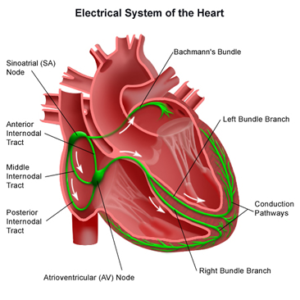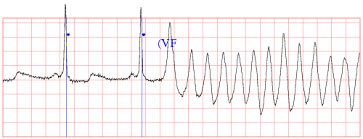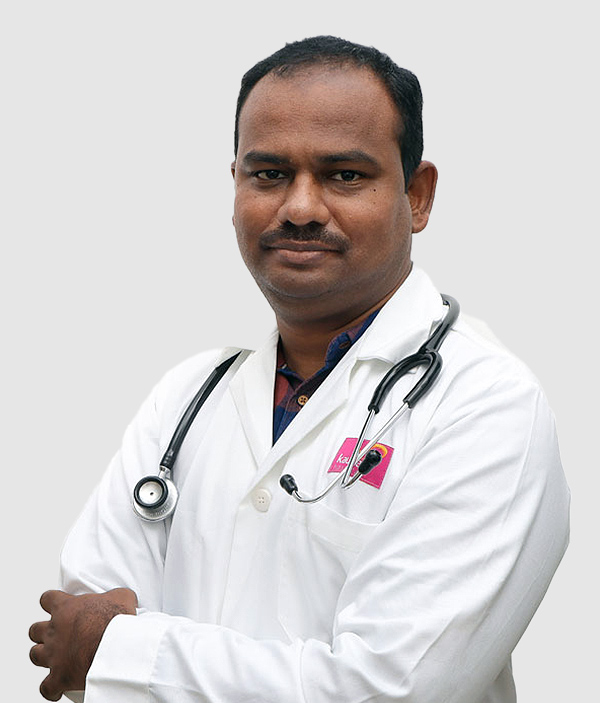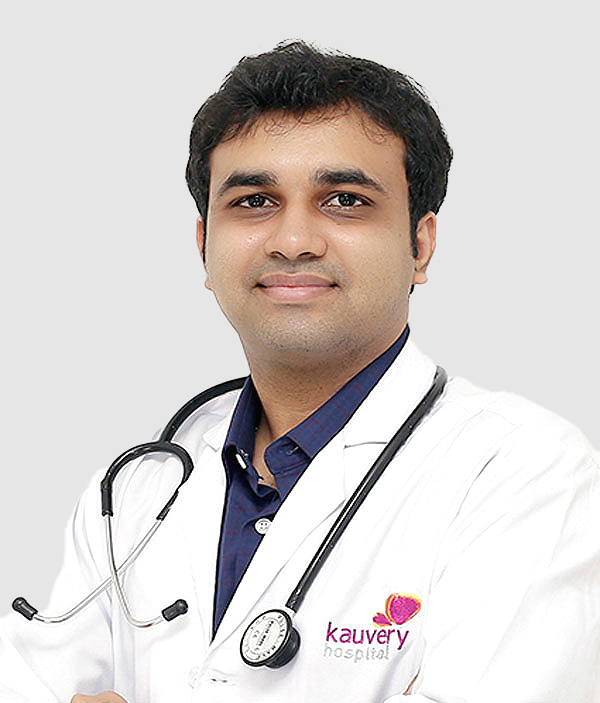Sudden Cardiac Arrest and the role of Cardiac Electrophysiology
The human heart is a complex mechanism consisting of arteries and veins that transport the pure/impure blood, valves that regulate this flow and heart muscles that beat in a rhythm to ensure this process. The various tasks in this sequence are enabled by electrical impulses that are generated constantly inside the heart.
There are various ailments that can affect the smooth functioning of the heart. Atherosclerosis is a condition in which plaque builds up in the arteries of the heart and over time causes a blockage. Then there are defects in the shape or functioning of valves, size of the heart, defects in the wall muscles etc. All these can cause a wide range of effects such as breathlessness, swelling in the legs, angina (chest pain), palpitations, heart attack and heart failure.
In addition to the above, there is a condition which directly affects the underlying mechanism of the heart’s functioning, which is the electrical circuitry. Such electrical problems in the heart can trigger what is called as SCA or Sudden Cardiac Arrest. SCA is different from, but is often confused with heart attack or heart failure.
Whether a heart attack due to blockage in the heart, or SCA - caused the death of the person can be known only after the post-mortem is done. Incidentally, there are some electrical problems in the heart that might have caused SCA, but the post-mortem appears normal, so knowing the exact cause of death can become a challenge.
The study of Sudden Cardiac Arrest
Sudden Cardiac Arrest is a lot more common than known. It’s the most common reason for natural death and also the single-largest reason for mortality among all heart-related ailments. SCA is also known to affect infants who have inherited the defect from either parent.
Due to advancements in science and better understanding of the condition, Sudden Cardiac Arrest (SCA) can be addressed and prevented with modern heart treatments. Very few centers in India have a dedicated program for SCA prevention. This is run by Department for Cardiac Electrophysiology which is a super-specialist heart department for heart electrical conditions that are available in a few centers across India, one of which is Kauvery Hospital, Chennai.
Electrical circuitry in the heart
Electrical circuitry in the heart
The heart which is basically a pump by virtue of its functionality works spontaneously because it gets power (electricity) from its own source called the Sinoatrial (SA) node. Electricity from its own source is carried to various parts of the heart through the heart’s own wiring systems (Figure 1). Like a mechanical pump, the heart’s normal functioning is only possible when the heart’s electrical system is functioning normally. Electrical problems of the heart may range from very slow heart electrical impulses or very fast heart electrical impulses or due to short circuiting between the wiring systems of the heart. There are several heart electrical conditions.
Signs and Symptoms of SCA
The most common symptom of SCA is a racing heart-beat that makes the person dizzy. Sometimes, this irregular heart-rhythm, called arrhythmia becomes dangerously high triggering a SCA. However, there are many people who have died from SCA but showed no visible signs or symptoms.
The diagrams to the right show a normal heart rhythm and how heart rhythm that suddenly becomes abnormal looks like.
Note: A patient is considered for liver transplantation only if it improves their chance of survival/quality of life. It is important to note that the patient should be fit enough to survive the operation. All patients must undergo an assessment before a decision is made regarding liver transplantation.
Risk factors
- Ejection fraction of less than 40 percent, combined with ventricular tachycardia. Ejection Fraction refers to how much your left ventricle contracts in order to pump blood. Ventricular tachycardia is a rapid heartbeat in the ventricles.
- Prior episode of sudden cardiac arrest or a previous heart attack
- Family history of sudden cardiac arrest or SCA
- Personal or family history of abnormal heart rhythms such as Wolff-Parkinson-White syndrome, extremely low heart rates or heart blockages
- Ventricular tachycardia or ventricular fibrillation after a heart attack
- History of congenital heart defects or blood vessel abnormalities
- History of fainting due to unknown reasons, called Syncope
- Heart failure or weak heart: Here, the heart’s pumping power is reduces which increases the risk for ventricular arrhythmia and SCA
- Dilated cardiomyopathy: Here a weakened left ventricle gets enlarged which reduces the heart’s ability to pump blood
- Hypertrophic cardiomyopathy: Thickening of the heart muscles which is more common with the ventricles
- The use of diuretics which can drastically alter potassium and magnesium levels in the blood can also cause SCA
- Similarly, nutritional imbalance such as low potassium or magnesium levels
- Obesity
- High blood cholesterol
- Diabetes
- High blood pressure
- A sedentary lifestyle
- Use and abuse of recreational drugs such as cocaine or amphetamines
- Drugs that are “pro-arrhythmic” which can trigger fatal arrhythmias
- A family history of coronary artery disease
- Smoking
- A personal or family history of arrhythmia, congenital heart defects, heart failure and cardiomyopathy
- Age — SCA is more common from the mid 40s onwards than in younger people
- Gender: Men are more likely to develop and die from SCA than women
- Obstructive sleep apnea
- Chronic kidney disease or CKD
Sudden Cardiac Arrest Preventions
In some people, SCA may not be fatal. But the reduced blood flow to the brain can cause unconsciousness (called syncope) and eventually death. Although rare, some do survive SCA but may show permanent brain damage.
If you are a friend or family member of someone who is showing signs of SCA, this is what you can do:
Call for emergency medical help immediately
Perform CPR
Even as you wait for medical help to arrive, you can perform Cardio-pulmonary resuscitation on the patient. Apply pressure on the chest in a series of quick and hard moves. Allow the chest to rise between compressions. This can help restore normal breathing and sometimes normal heart rhythm.
Use of portable defibrillator
The emergency medical workers will arrive with a portable defibrillator but if you have access to one, you can use it on the patient. The portable defibrillator comes with step-by-step instructions. The device will monitor the person’s heart rhythm and administer an electric shock. Once the shock has been given, resume CPR till you have a specialist treating the person.
There is no known drug or procedure that can certainly cure or prevent SCA. However, depending on the condition that is triggering an SCA, doctors may perform any of the below procedures that help to minimize the likelihood of SCA.
Surgery
Patients with Coronary Artery Disease may have to undergo an angioplasty or bypass surgery to improve blood flow to the heart and minimize the risk of SCA. Patients with congenital heart issues and hypertrophic cardiomyopathy may require surgery too.
Minimally Invasive procedures
- Electrical cardioversion and catheter ablation: In this, The Cardiac Electrophysiologist will map the heart using the dedicated 3D mapping system without involving the X-rays to detect the exact area that is causing the arrhythmias. Then using high electrical energy, the abnormal electrical pathways are cauterized or destroyed, so as to cure the electrical abnormalities permanently. This is called Catheter ablation.
- Ventricular reconstruction surgery: Most heart attacks leave a scar in the heart and the tissues surrounding the scar develop electrical short circuits and eventually arrhythmia. The surgeon may then remove the dead or infracted tissue in order to minimize the risk of future SCA.
Implantable Cardioveter Defibrillator (ICD)
The portable defibrillator described above is bulky and requires trained personnel to handle it. Technological advances have helped miniaturize the fibrillator and implant it in the patient’s heart. The device delivers electrical shocks whenever it detects an abnormal heart rhythm. The shock can help restore the correct heart rhythm. However, not all patients are suited for an implant, and only those who are at high risk of SCA require the implant. Such patients are identified and treated by Certified Cardiac Device Specialist (CCDS).
Cardiac Resynchronisation Therapy (CRT):
In patients with poor heart function, often referred to as heart failure, one of the major contributors to their poor heart function is abnormal electrical conduction within such hearts due to faulty wiring. This is referred to as Left Bundle Branch Block (LBBB). Such patients benefit from a treatment which essentially involves rewiring the heart referred to as Cardiac Resynchronisation Therapy (CRT).
Causes of Sudden Cardiac Arrest
As explained above, arrrythmia due to electrical problems in the heart is the primary trigger for SCA. Arrhythmia in the lower chambers of the heart or ventricles is the most common trigger for SCA. Rapid and irregular electrical impulses in the lower ventricles cause the lower ventricles to quiver unnecessarily instead of pumping blood, and this condition is called ventricle fibrillation.
However, the fatal arrhythmia may have developed due to various pre-existing heart conditions that may or may not have been diagnosed before:
Coronary artery disease (CAD)
Atherosclerosis which is the deposition of plaque in the arteries causes coronary artery disease which is one of the most common cause for SCA. The reduced blood flow causes a sudden cardiac arrest.
Heart attack
When CAD becomes severe, it can trigger a heart attack. Some people who have survived such an attack develop ventricular fibrillation which is a trigger for SCA. Further, when a heart attack occurs, it leaves a scar in the heart. Tissues around this scar develop electrical short circuits which can trigger an abnormal heart rhythm and eventually SCA.
Enlarged heart or cardiomyopathy
In some people, the muscles of the heart walls stretch, enlarge or thicken, which eventually triggers arrhythmia.
Valvular heart disease
The above enlarging or thickening of the wall muscles may have been caused by a leaking or narrowing of one or more valves of the heart. So people with valvular disease are at a high risk of developing arrhythmia.
Congenital heart disease
Some children may have a heart defect from birth (congenital) which increases the risk of sudden cardiac arrest. In their adult life, such children may have corrective surgery for the defect and this also increases the risk for sudden cardiac arrest.
Electrical problems in the heart
Instead of a defect in the arteries, valves or muscles of the heart, some people may have a defect in electrical system of the heart leading to abnormalities in the heart rhythm. This includes conditions such as Brugada’s syndrome and long QT syndrome.
Book an Appointment
Screening for Sudden Cardiac Arrest
People over 40 years of age, as well as athletes and sportspersons at any age, who display any of the above mentioned risk factors, must get screened for SCA every 2 years. A Cardiac Electrophysiologist will assess your personal and family health history, and conduct various tests including exercise stress test to obtain a picture of your heart. Then depending on your level of risk for SCA, he/she may put you on a course of treatment or educate you on the lifestyle you must follow.
Sudden Cardiac Arrest can be an unfortunate symptom of heart disease that can often only be prevented as time to treatment is short. The commonest cause of SCA, or death from any heart abnormality, is a heart electrical abnormality. This is not the same as a Heart Attack. SCA can be prevented through modern treatments and patients at high risk can be picked up in such specialist centres.
Heart Electrical abnormality is best dealt with by a specialist ‘Heart Electrician’ referred to as ‘Cardiac Electrophysiologist’. SCA can also affect children and are best dealt with in centres with dedicated ‘Paediatric Electrophysiology’.
Finally, anyone with a family history of sudden unexplained death, patients who suffer from palpitations, loss of consciousness and those who have had a heart attack previously must be evaluated for SCA by a Cardiac Electrophysiologist.







